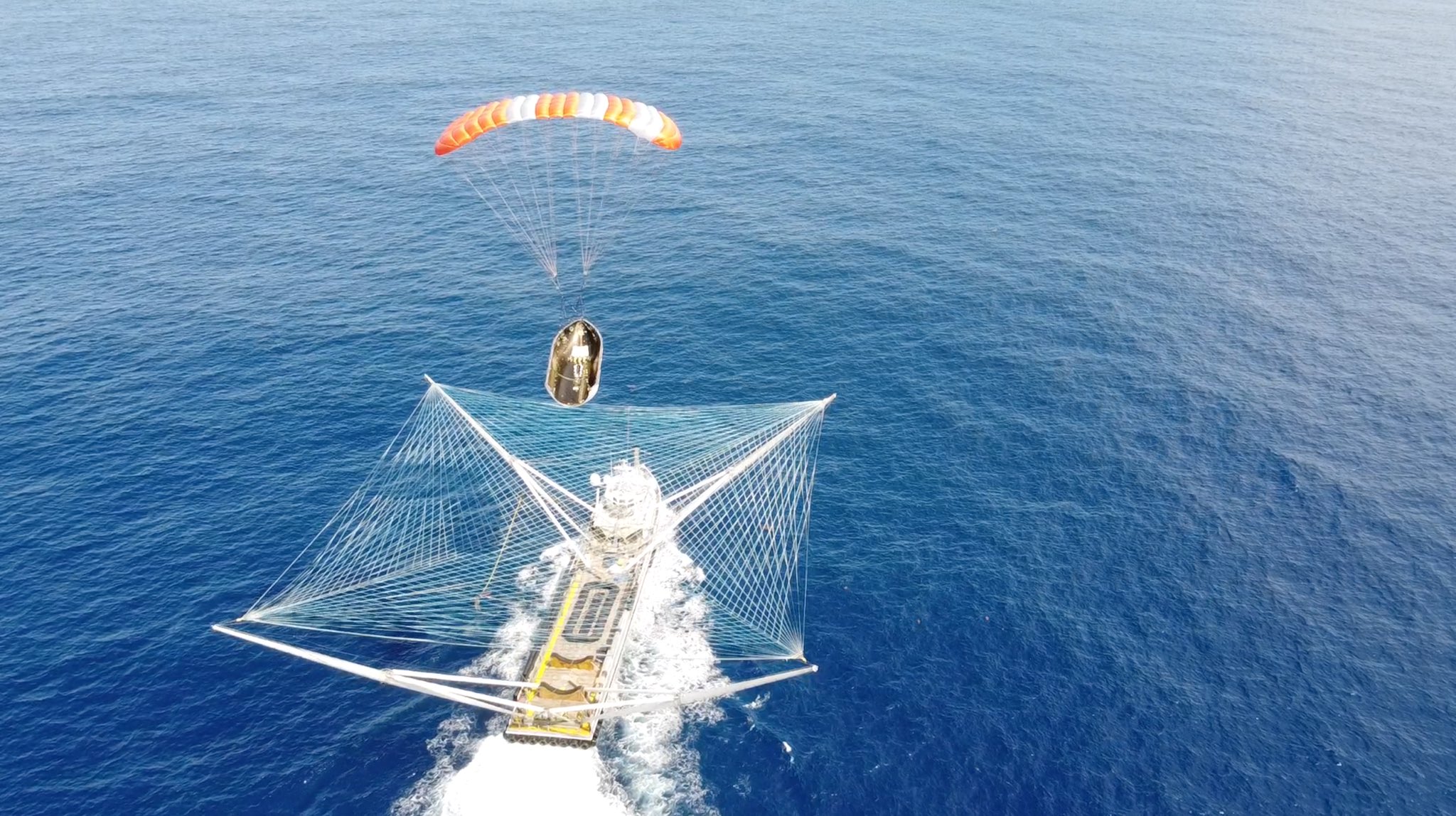SpaceX just plucked another payload fairing out of the sky, and you can see video of the dramatic cosmic catch.
The net-equipped SpaceX boat GO Ms. Tree snagged half of a falling payload fairing Tuesday (Aug. 18), shortly after a two-stage Falcon 9 rocket launched 58 Starlink internet satellites and three Earth-observation spacecraft into orbit.
Payload fairings are the shrouds that protect satellites during launch. SpaceX fairings come in two pieces, both of which come back to Earth under parachutes in a guided fashion, thanks to small thrusters. Such tech aids recovery and reuse of the fairings, which cost about $6 million each, SpaceX founder and CEO Elon Musk has said.
Related: SpaceX's Starlink satellite megaconstellation launches in photos
Aloha, welcome back from space 💫 pic.twitter.com/xWPN09WtawAugust 18, 2020
GO Ms. Tree and its sister ship, GO Ms. Chief, are part of this picture as well. Seawater is extremely corrosive, so snatching fairing halves out of the sky makes refurbishment easier, Musk has said. The ships have snagged a handful of fairings to date, including a double catch during the launch of a South Korean military satellite last month. (Ocean splashdowns don't preclude reuse, however; SpaceX has reflown fairings that it fished out of the water.)
GO Ms. Chief pulled one fairing half out of the Atlantic Ocean today. But GO Ms. Tree caught the other one, a success captured by a camera-equipped drone. Musk posted that footage on Twitter Tuesday, scoring the 43-second video with some playfully incongruous lounge music.
Today's launch featured reusability action on multiple fronts. It was the sixth launch for this particular Falcon 9 first stage, for example, a milestone that SpaceX had never before achieved. And more liftoffs are likely coming for the booster, which aced its landing on a ship at sea Tuesday.
Get the Space.com Newsletter
Breaking space news, the latest updates on rocket launches, skywatching events and more!

Starlink is SpaceX's burgeoning constellation of internet satellites. The company has launched nearly 600 Starlink craft to date, and many more will go up in the near future: SpaceX has permission to launch 12,000 such satellites and has applied for approval to loft up to 30,000 on top of that.
The three other satellites that went up today are SkySats. They belong to San Francisco-based company Planet, which operates the world's largest constellation of Earth-observing spacecraft.
Mike Wall is the author of "Out There" (Grand Central Publishing, 2018; illustrated by Karl Tate), a book about the search for alien life. Follow him on Twitter @michaeldwall. Follow us on Twitter @Spacedotcom or Facebook.
Join our Space Forums to keep talking space on the latest missions, night sky and more! And if you have a news tip, correction or comment, let us know at: community@space.com.

Michael Wall is a Senior Space Writer with Space.com and joined the team in 2010. He primarily covers exoplanets, spaceflight and military space, but has been known to dabble in the space art beat. His book about the search for alien life, "Out There," was published on Nov. 13, 2018. Before becoming a science writer, Michael worked as a herpetologist and wildlife biologist. He has a Ph.D. in evolutionary biology from the University of Sydney, Australia, a bachelor's degree from the University of Arizona, and a graduate certificate in science writing from the University of California, Santa Cruz. To find out what his latest project is, you can follow Michael on Twitter.









